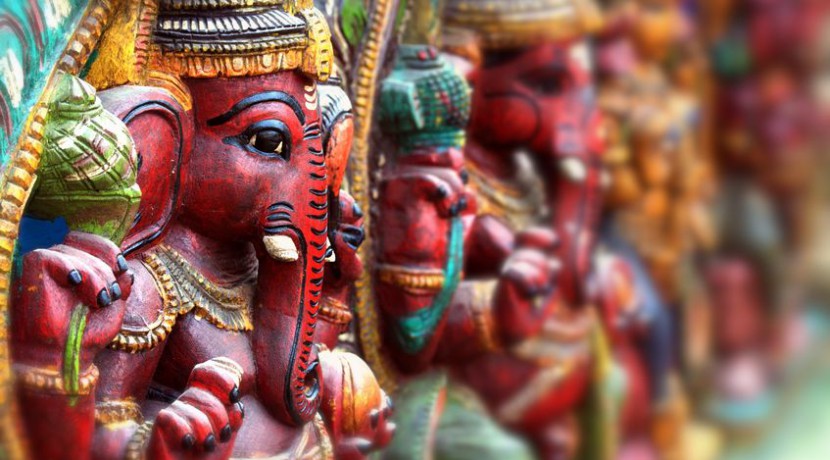The Idols of Ganesh Chaturthi: A Religious Ritual That’s Bad for the Environment
Yesterday, June 8, was World Oceans’ Day. Every year, millions of tons of plastic waste are dumped into the oceans where they accumulate, harming marine life and destroying ecosystems that directly impact human life on Earth. Here is the interesting story of a longstanding religious and cultural custom as it adapts to become more eco-conscious in modern contexts in which it is practiced.

As he explained, in the beginning, one can imagine parents teaching their children about the impermanence of life by making a little clay figure of a god, covering it with flowers, worshipping it for a while, and then putting it into a nearby pond where it could dissolve right back into the earth where it came from. But now that people have moved to the cities, they use resources from elsewhere to build and decorate their idols and then put the idols into water far away from the material’s real source, thus linearizing the process, breaking the cycle of life, and rendering the whole practice unsustainable. The festival worries him greatly. He called it a “blind ritual” that many people follow out of fear that if they stop doing what their family has done for years, they will suffer. “We’re god fearing,” he said, sadly. “Not life loving.”
While some environmentalists call for a legal end to the practice or a legal prohibition on selling idols for visarjan that are made from harmful materials, others criticize this solution for creating economic barriers to religious practice, as lower income families cannot afford the more expensive clay idols. More ecofriendly solutions that don’t insist on banning the practice may include creating the idols from biodegradable materials like papier-mâché, or, as created by the Sprouts Environmental Trust in partnership with a private company, an edible Ganesha idol made from vegetarian food and corn. Other families symbolically immerse their idols in containers of water at home instead of in bodies of water where they can negatively impact ecosystems. And some even choose what seems to be more economic in the long-run: to invest in a stone-and-brass idol that is reused yearly. But Wexler’s tour guide makes an important point: a religious practice that’s harmful to the environment—and thus, harmful to the human beings practicing it—may still continue due to their fear of god. While meaning can be found in religious rituals and cultural practices that don’t harm or oppress other human beings, it can be difficult to motivate devoted individuals to adapt deeply engrained beliefs and rules of ritual to meet the socially-ordained, modern-day values. Humanists are motivated to work for progress because of their love for humanity and commitment to cherish the one life we have. Decreasing plastic litter or toxic pollution to the oceans, countering climate change, and supporting other environmental causes is driven by a deep desire to prolong the longevity of the human race and our stewardship of the planet.